All the services you need,
all in one place.
COSMETIC DENTISTRY

Cosmetic Dentistry
Bonding is a process in which an enamel-like material is applied to a tooth`s surface, sculpted to an ideal shape, hardened, and then polished for an ideal smile. This procedure usually can be accomplished in a single visit.
Bonding is often performed in order to fill in gaps or change the color of your teeth. It typically only entails one office visit, and the results last for several years.
Bonding is more susceptible to staining or chipping than other forms of restoration such as veneers. When teeth are chipped or slightly decayed, bonded composite resins may be the material of choice. Bonding also is used as a tooth-colored filling for small cavities and broken or chipped surfaces.
In addition, bonding can be used to close spaces between teeth or cover the entire outside surface of a tooth to change its color and shape. Crowns, also known as caps, are used in cases where other procedures will not be effective. Crowns have the longest life expectancy of all cosmetic restorations, but are the most time consuming.
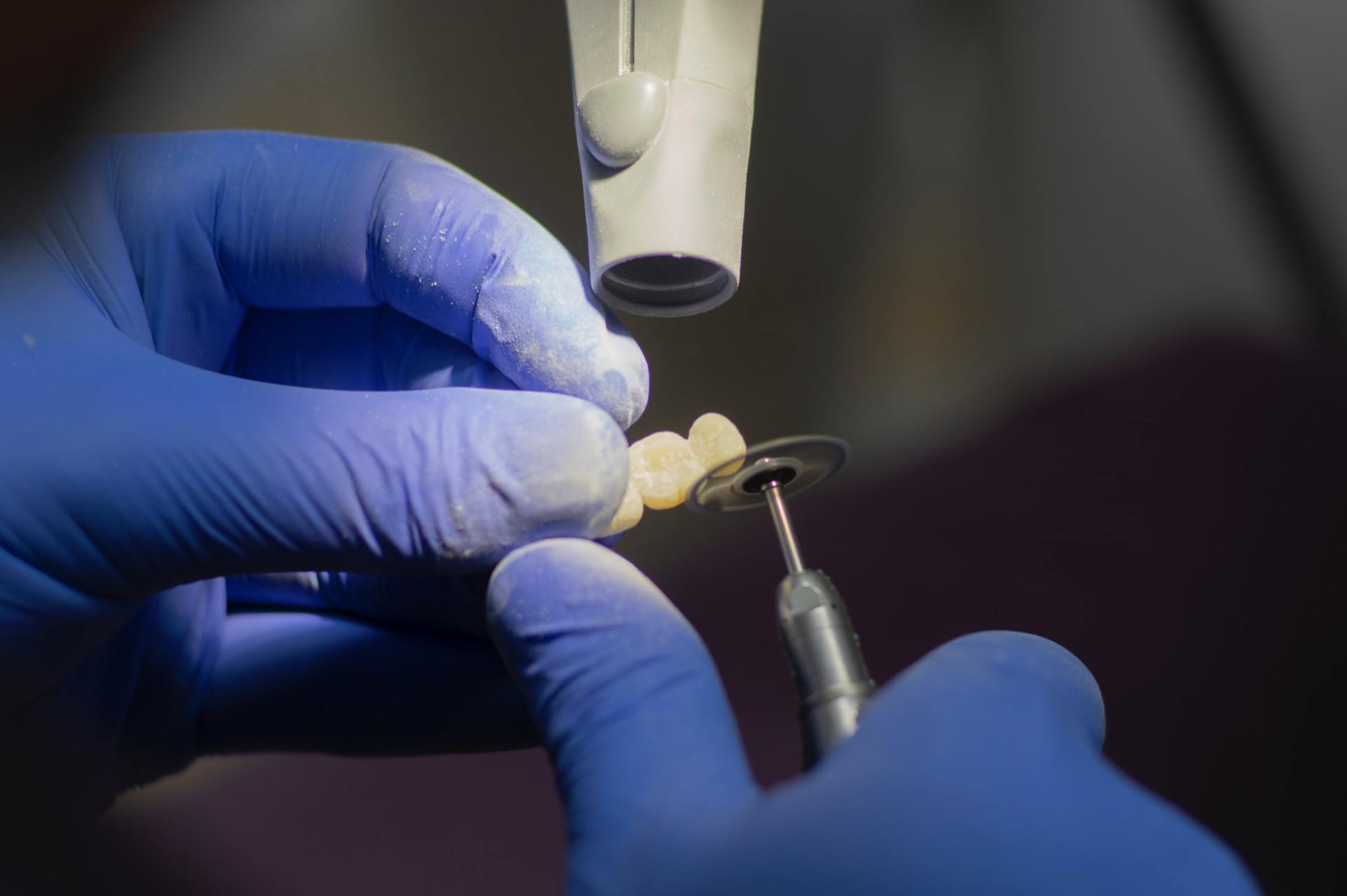
Cosmetic Dentistry
Ridges are natural-looking dental appliances that can replace a section of missing teeth. Because they are custom-made, bridges are barely noticeable and can restore the natural contour of teeth as well as the proper bite relationship between upper and lower teeth.
Crowns are synthetic caps, usually made of a material like porcelain, placed on the top of a tooth.

Cosmetic Dentistry
Implants are synthetic structures that are placed in the area of the tooth normally occupied by the root. Implants are anchored to the jawbone or metal framework on the bone and act as a foundation for an artificial tooth or permanent bridge. In some cases, implants can be used to attach dentures.

Cosmetic Dentistry
Teeth that are badly stained, shaped or crooked may be improved by a veneer placed on the surface of the affected teeth.
Veneers are thin pieces of porcelain or plastic cemented over the front of your teeth to change their color or shape. Veneers are used on teeth with uneven surfaces or are chipped, discolored, oddly shaped, unevenly spaced or crooked. Little or no anesthesia is needed. Veneers have a longer life expectancy and color stability than bonding, and highly resist permanent staining from coffee, tea, or even cigarette smoking.
Typically, veneers entail at least three appointments: diagnosis and treatment planning, preparation, and bonding.
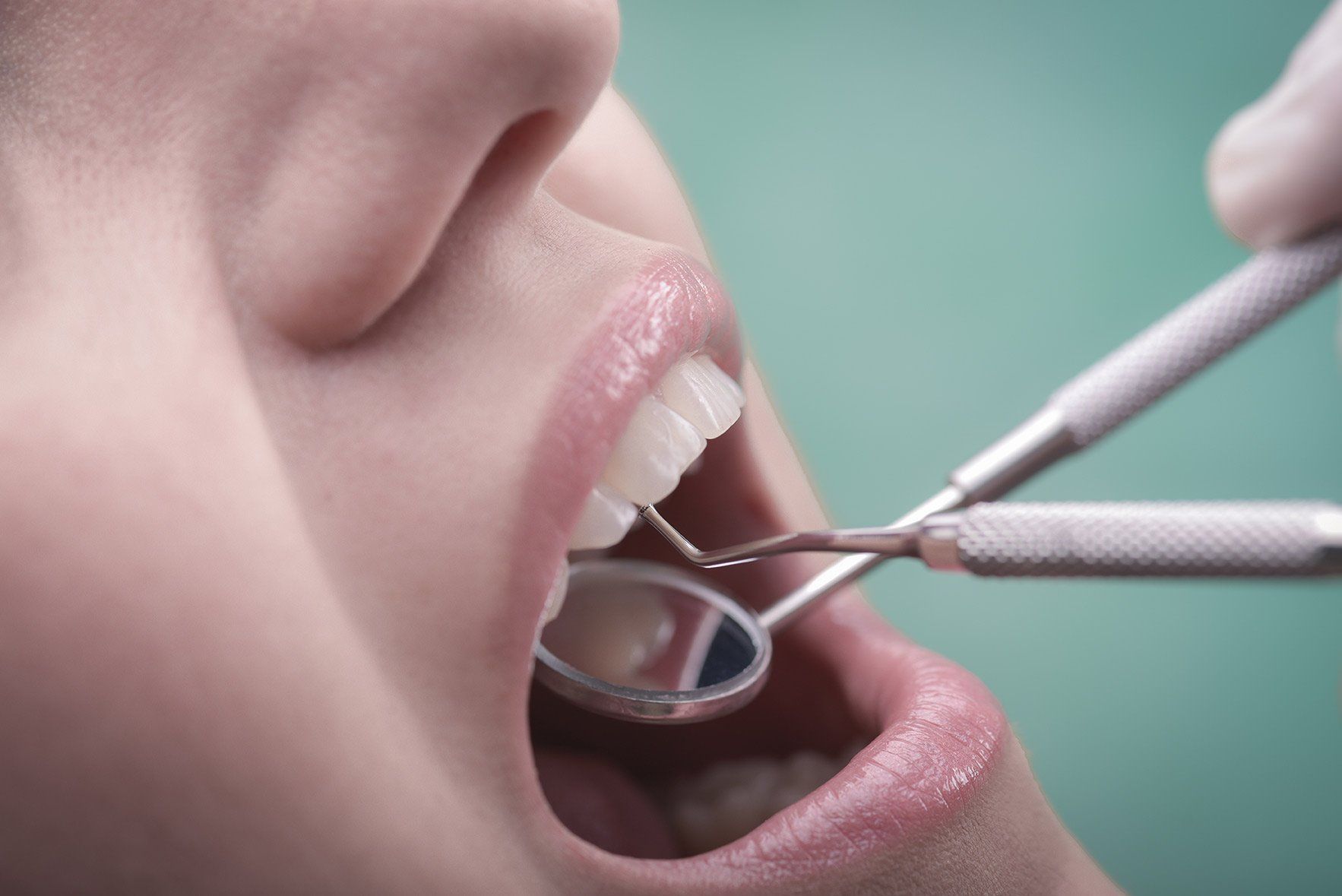
Cosmetic Dentistry
Whitening procedures have effectively restored the smile of people with stained, dull, or discolored teeth. The darker tissue of your teeth, the dentin, can become exposed as the outer layer of enamel is worn away by the effects of aging or things like caffeine and tobacco.
Food particles are naturally attracted to a tooth's enamel by a certain protein. Products like coffee and tea, berries and soy sauce are notorious for staining teeth. Over time, teeth actually become more absorbent and vulnerable to staining from food and other substances.
One type of stain—caused by traumatic injuries, medications and fluorosis—actually begins inside the tooth; brushing and flossing don’t help. Another type of stain—one that can be more easily attacked by brushing, flossing and rinsing—is caused by external factors such as foods.
More and more people today are choosing tooth-whitening procedures to reverse the effects of aging and abuse from food and tobacco stains.
Some commercially available "whitening toothpastes" can be somewhat effective at removing stains and making teeth a few shades brighter. However, many of these products have abrasive substances that can actually wear away your tooth's enamel.
Whitening agents actually change the color of your teeth, but only are effective on certain types of stains. For example, bleaching agents have a difficult time removing brownish or grayish stains. These products also are not as effective on pitted or badly discolored teeth, or on restorations such as crowns, bridges, bonding and tooth-colored fillings (porcelain veneers or dental bonding may be more appropriate in this case).
Professional whitening performed by our office is considered to be the most effective and safest method; done properly, tooth whitening can last as long as five years. Over-the-counter whitening systems are somewhat effective as long as they are monitored and directions followed closely.
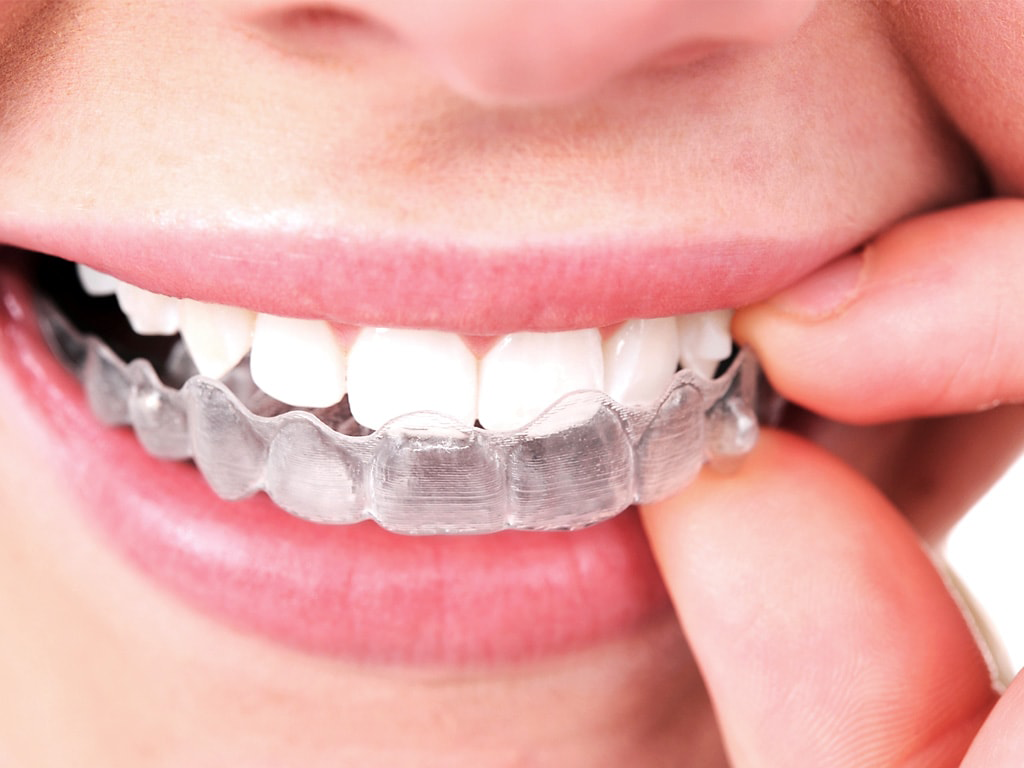
Cosmetic Dentistry
Invisalign's® invisible, removable, and comfortable aligners will give you the beautiful straight teeth you've always wanted, is great for adults and teenagers. Process is effective over an average of 6-15 months!
Cosmetic Dentistry
The procedure involves taking gum tissue from the palate or another donor source to cover an exposed root in order to even the gum line and reduce sensitivity. Helps to improve the aesthetics of your gum line.
The procedure involves taking gum tissue from the palate or another donor source to cover an exposed root in order to even the gum line and reduce sensitivity.
Periodontal procedures are available to stop further dental problems and gum recession, and to improve the aesthetics of your gum line. For example, an exposed tooth root resulting from gum recession may not be causing you pain or sensitivity, but is causing one or more of your teeth to look longer than the others. In other cases, an exposed tooth root causes severe pain because it is exposed to extremes in temperatures or different kinds of food and liquids.
Once contributing factors are controlled, a soft tissue graft procedure will repair the defect and help to prevent additional recession and bone loss.
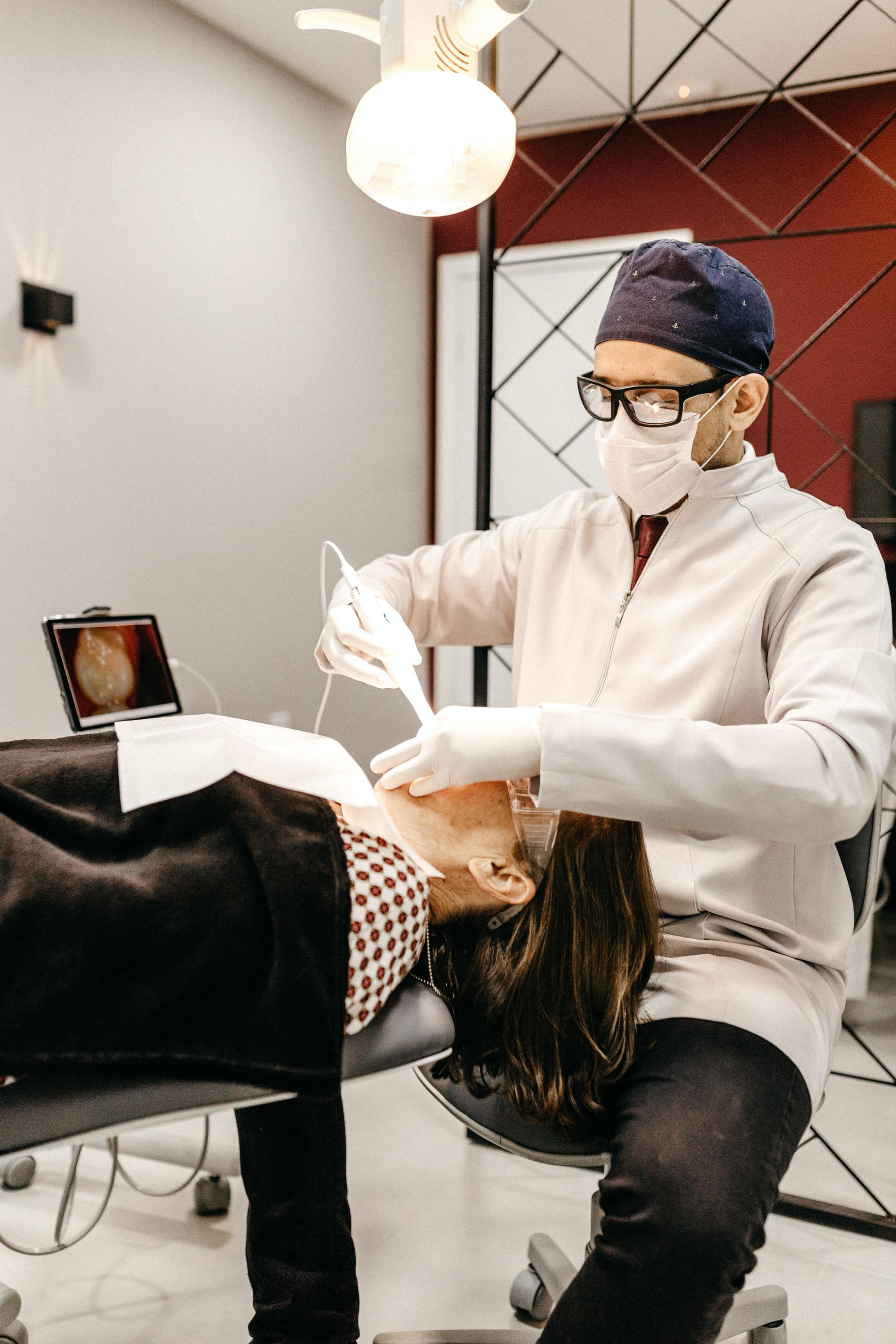
Cosmetic Dentistry
Ridge augmentation is a procedure that can recapture the natural contour of the gums and jaw, from an adult tooth missing.
A new tooth can then be created that is natural looking and complements your smile.
Cosmetic Dentistry
Bleaching and non-bleaching products are the two basic kinds of whitening products available today. Non-bleaching products normally use abrasives or chemicals and only remove surface stains on teeth.
Bleaching products work with a chemical called peroxide and can brighten your teeth several shades. Another process employs the use of a special gel that is placed inside a flexible device you wear around your teeth for a certain period of time. After you remove the device, you must use a second bleaching agent, followed by a special light to activate the chemical action. Mildly stained teeth usually only require one session of bleaching.

Cosmetic Dentistry
Special thin laminates, called veneers, can often be used to correct discolored, worn down, cracked and chipped teeth. Veneers can also be used to close unsightly gaps between teeth. Stronger types of veneers made of porcelain, also called composite veneers, typically last longer because they are bonded to the tooth.
Another process called bonding can accomplish some of the same things, but it does not last as long. Material that looks much like the enamel on your teeth is used during a bonding procedure. The material is shaped to the tooth, and when it becomes hard it is polished.
In addition, dental contouring and reshaping can correct chipped, cracked, crooked, or even overlapping teeth. This procedure can alter the shape, length, or position of teeth.
TREATMENTS DENTISTRY

Treatment Dentistry
Some cases of acute periodontal (gum) disease that do not respond to more conventional treatment and self-care such as flossing may require a special kind of cleaning called scaling and root planing.
The procedure begins with administration of a local anesthetic to reduce any discomfort. Then, a small instrument called a "scaler," or an ultrasonic cleaner, is used to clean beneath your gum line to remove plaque and tartar.
The root surfaces on the tooth are then planed and smoothed. If effective, scaling and root planing helps the gums reattach themselves to the tooth structure. Additional measures may be needed if the periodontal pockets persist after scaling and root planing.

Treatment
Root canals are tiny passageways that branch off from beneath the top of the tooth, coursing their way vertically downward, until they reach the tip of the root.
All teeth have between one and four root canals.
Many tooth problems involve infections that spread to the pulp, which is the inner chamber of the tooth containing blood vessels, nerves and other tissues. When the infection becomes worse, it can begin affecting the roots. A traumatic injury to a tooth can also compromise the pulp, leading to similar problems.
A diseased inner tooth brings a host of problems including pain and sensitivity as the first indications of a problem. However, inside a spreading infection can cause small pockets of pus to develop, which can lead to an abscess.
Root canal therapy is a remarkable treatment with a very high rate of success, and involves removing the diseased tissue, halting the spread of infection and restoring the healthy portion of the tooth. In fact, root canal therapy is designed to save a problem tooth; before the procedure was developed and gained acceptance, the only alternative for treating a diseased tooth was extraction.
Treatment Dentistry
When facial reconstruction, including procedures involving the oral cavity, is called for, a specialist is needed. Surgical procedures of the neck and head area are performed by a maxillofacial surgeon.
Common maxillofacial procedures include denture-related procedures and jaw surgery.
Jaw Correction
Protruding chins, crooked or buck teeth or misaligned teeth are good candidates for maxillofacial surgery.
In some people, jaws do not grow at the same rate; one may come in larger than the other, or simply not be aligned properly with other bony structures in the skull. This can cause problems other than appearance issues; an improperly aligned jaw can cause problems with the tongue and lips, and speech and chewing problems as well. Jaw surgery can move jaws into their proper place.
Other kinds of maxillofacial surgery can correct problems with upper facial features such as the nose and cheek.
In addition to correcting jaw problems surgically, orthodontic appliances such as braces may be needed to restore bite relationship and ensure continued proper alignment of the jaw. In some cases, tiny wires or small rubber bands may be needed to keep the jaws in place and promote faster healing. In other cases, small "fixation" screws or plates may need to be inserted in the jaws to facilitate easy movement of the jaws following surgery.
Denture Fatigue
People who have worn dentures for a long time can sometimes experience loss of gum tissue and even bone, mostly from the wear and tear of the appliance on the soft tissues of their mouth.
In extreme cases, maxillofacial surgery, including bone grafts, manipulation of soft tissues or even jaw realignment, may be performed to correct such problems.
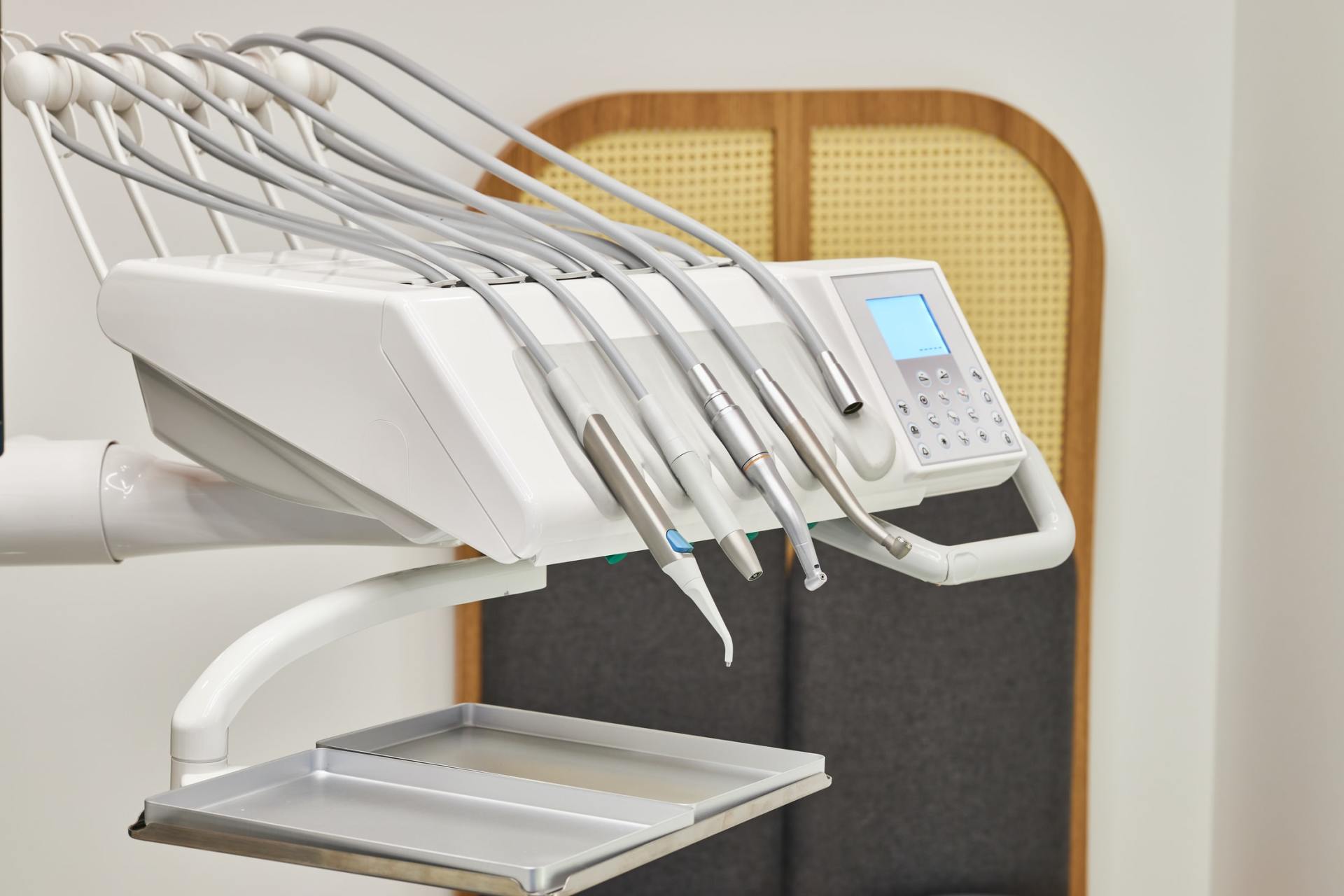
Treatment Dentistry
Your bone and gum tissue should fit snugly around your teeth like a turtleneck. When you have periodontal disease, this supporting tissue and bone is destroyed, forming "pockets" around the teeth. Over time, these pockets become deeper, providing a larger space for bacteria to thrive and wreak havoc.
As bacteria accumulate and advance under the gum tissue in these deep pockets, additional bone and tissue loss follows. Eventually, if too much bone is lost, the teeth will need to be extracted.
Flap surgery is sometimes performed to remove tartar deposits in deep pockets or to reduce the periodontal pocket and make it easier for you or your dental professional to keep the area clean. This common surgery involves lifting back the gums and removing the tartar. The gums are then sutured back in place so that the tissue fits snugly around the tooth again.
A pocket reduction procedure is recommended if daily at-home oral hygiene and a professional care routine cannot effectively reach these deep pockets.
In some cases, irregular surfaces of the damaged bone are smoothed to limit areas where disease-causing bacteria can hide. This allows the gum tissue to better reattach to healthy bone.
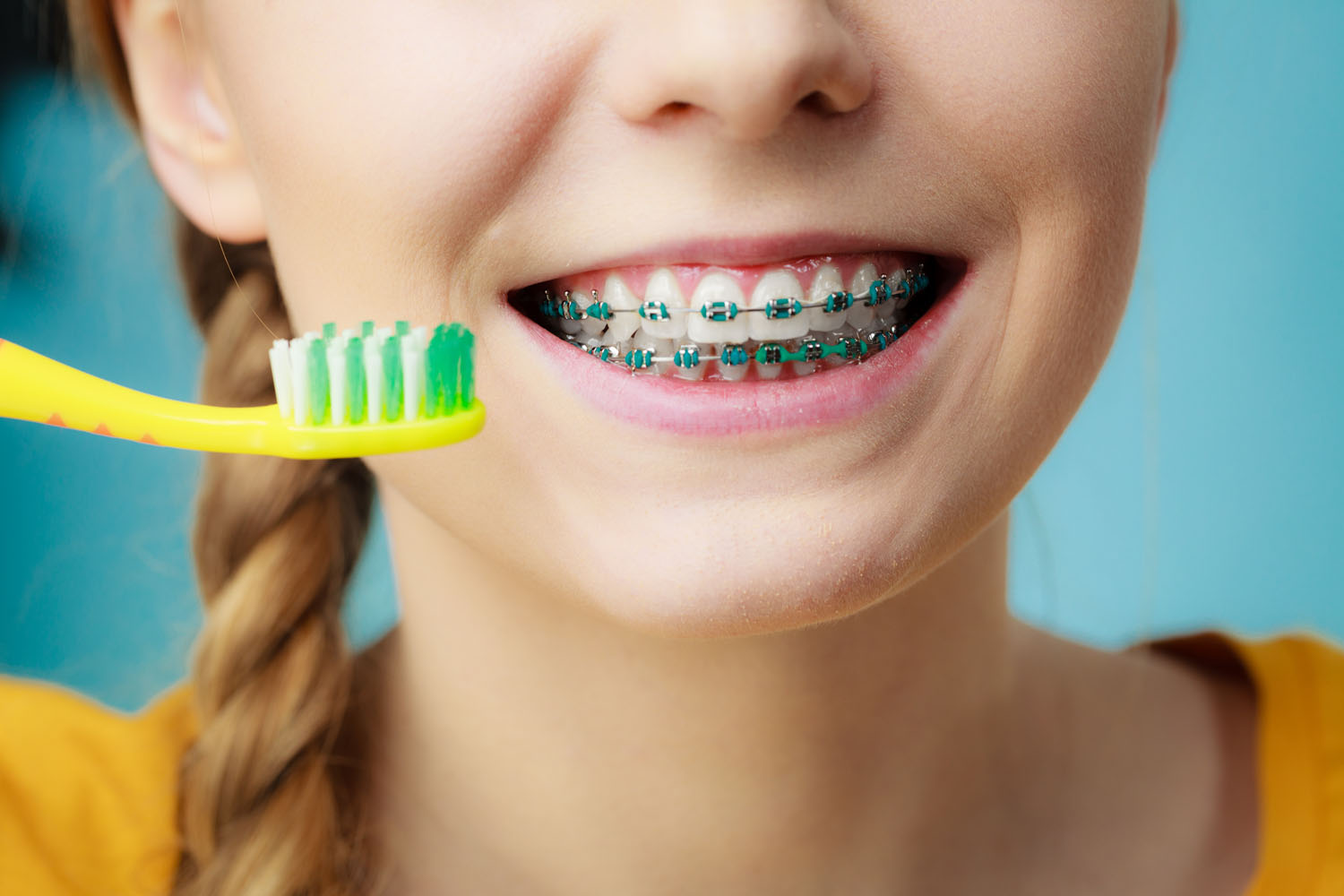
Treatment Dentistry
Braces are applied to teeth for various reasons, including poorly aligned jaws, crooked, crowded and missing teeth, or a bad bite (also called malocclusion).
Various things can cause teeth to become crooked or jaws misaligned, including thumb-sucking or a traumatic injury. Some conditions are inherited.
Children between the ages of 7 and 14 are typical candidates for braces because their facial structures are still developing. Adult braces usually entail additional procedures because their faces have already fully developed.
About Braces
Orthodontics is a field of dentistry that deals with corrections involving jaw and teeth alignment.
Braces employ the use of wires and are usually one of three types:
- Old-fashioned, conventional braces, which employ the use of metal strips, or bands.
- Metal or plastic brackets that are cemented or bonded to teeth.
- Brackets that attach to the back teeth (also called lingual braces).

Treatment Dentistry
When restoration procedures such as root canal therapy, crowns, or fillings are not enough to save a tooth, it may need to be pulled, or extracted.
Tooth extraction procedures today are far less painful than ever before, thanks to powerful anesthetics and sedatives. In many cases, a patient who has tooth pulled experiences little or no discomfort, and only minor bleeding.
Before a tooth is extracted, the area surrounding the tooth is numbed with a topical/and or injectable anesthetic such as Novocaine.
Patients with extracted teeth sometimes need to take an antibiotic, and at the very least, take precautions following the procedure to ensure that infection doesn't occur.
Smoking, vigorous brushing and rinsing, and drinking liquids through straws are discouraged during the post-operative period because they hinder healing and may cause the wound to open. Cold compresses applied to the outside cheek near the extraction area can help reduce any swelling and promote faster healing.
Treatment Dentistry
People who grind their teeth can sometimes develop a serious problem with their jaw, which left untreated, can adversely affect the teeth, gums and bone structures of the mouth.
One of the most common jaw disorders is related to a problem with the temporomandibular joint, the joint that connects your lower jaw to your skull, and allows your upper and lower jaw to open and close and facilitates chewing and speaking.
People with temporomandibular joint disorders (TMD) often have a clicking or popping sound when opening and closing their mouths. Such disorders are often accompanied by frequent headaches, neck aches, and in some cases, tooth sensitivity.
Some treatments for TMD include muscle relaxants, aspirin, biofeedback, or wearing a small plastic appliance in the mouth during sleep.
Minor cases of TMD involve discomfort or pain in the jaw muscles. More serious conditions involve improperly aligned joints or dislocated jaws. The most extreme form of TMD involves an arthritic condition of the jaw joint. Traumatic injuries also can cause jaw dislocation.
In these cases, jaw surgery may be required to correct the condition. Some jaw surgery can be performed arthroscopically.

Treatment Dentistry
The pits and grooves of your teeth are prime areas for opportunistic decay. Even regular brushing sometimes misses some of these intricate structures on the chewing surfaces of your teeth.
Enter sealants, which are thin coatings applied to the chewing surfaces designed to prevent the intrusion of bacteria and other debris into the deep crevices on the tops of your teeth.
Sealants actually were developed about 50 years ago, but didn't become commonly used until the 1970s. Today, sealants are becoming widely popular and effective; young children are great candidates for preventative measures like sealants because in many cases, decay has not set in. Even on teeth where decay is present, sealants have been shown to fight additional damage.
Sealants are applied by first cleaning the tooth surface. The procedure is followed by etching the tooth with an abrasive substance, which allows the sealant to better adhere. After the sealant is applied, a warm light source is directed to the site to promote faster drying. Sealants usually need re-application every five to 10 years.
Treatment Dentistry
A denture is a removable replacement for missing teeth and adjacent tissues. It is made of acrylic resin, sometimes in combination with various metals.
Types of dentures
Complete dentures replace all the teeth, while a partial denture fills in the spaces created by missing teeth and prevents other teeth from changing position.
Candidates for complete dentures have lost most or all of their teeth. A partial denture is suitable for those who have some natural teeth remaining. A denture improves chewing ability and speech, and provides support for facial muscles. It will greatly enhance the facial appearance and smile.
Complete or full dentures are made when all of your natural teeth are missing. You can have a full denture on your upper or lower jaw, or both.
Complete dentures are called "conventional" or "immediate" according to when they are made and when they are inserted into the mouth. Immediate dentures are inserted immediately after the removal of the remaining teeth. To make this possible, the dentist takes measurements and makes the models of the patient`s jaws during a preliminary visit.
An advantage of immediate dentures is that the wearer does not have to be without teeth during the healing period. However, bones and gums can shrink over time, especially during the period of healing in the first six months after the removal of teeth. When gums shrink, immediate dentures may require rebasing or relining to fit properly. A conventional denture can then be made once the tissues have healed. Healing may take at least 6-8 weeks.
An overdenture is a removable denture that fits over a small number of remaining natural teeth or implants. The natural teeth must be prepared to provide stability and support for the denture.
DENTAL PROBLEMS

Dental Problems
Simple toothaches can often be relieved by rinsing the mouth to clear it of debris and other matter. Sometimes, a toothache can be caused or aggravated by a piece of debris lodged between the tooth and another tooth. Avoid placing an aspirin between your tooth and gum to relieve pain, because the dissolving aspirin can actually harm your gum tissue.
Broken, Fractured, or Displaced Tooth
A broken, fractured or displaced tooth is usually not a cause for alarm, as long as decisive, quick action is taken.
If the tooth has been knocked out, try to place the tooth back in its socket while waiting to see your dentist.
First, rinse the mouth of any blood or other debris and place a cold cloth or compress on the cheek near the injury. This will keep down swelling.
If you cannot locate the tooth back in its socket, hold the dislocated tooth by the crown - not the root. Next, place it in a container of warm milk, saline or the victim's own saliva and keep it in the solution until you arrive at the emergency room or dentist's office.
For a fractured tooth, it is best to rinse with warm water and again, apply a cold pack or compress. Ibuprofen may be used to help keep down swelling.
If the tooth fracture is minor, the tooth can be sanded or if necessary, restored by the dentist if the pulp is not severely damaged.
If a child's primary tooth has been loosened by an injury or an emerging permanent tooth, try getting the child to gently bite down on an apple or piece of caramel; in some cases, the tooth will easily separate from the gum.
Dental Problems
Gingivitis is the medical term for early gum disease, or periodontal disease. In general, gum disease can be caused by long-term exposure to plaque, the sticky but colorless film on teeth that forms after eating or sleeping.
Gum disease originates in the gums, where infections form from harmful bacteria and other materials left behind from eating. Early warning signs include chronic bad breath, tender or painful swollen gums and minor bleeding after brushing or flossing. In many cases, however, gingivitis can go unnoticed. The infections can eventually cause the gums to separate from the teeth, creating even greater opportunities for infection and decay.
Although gum disease is the major cause of tooth loss in adults, in many cases it is avoidable.
If gingivitis goes untreated, more serious problems such as abscesses, bone loss or periodontitis can occur.
Periodontitis is treated in a number of ways. One method, called root planing, involved cleaning and scraping below the gum line to smooth the roots. If effective, this procedure helps the gums reattach themselves to the tooth structure. However, not all instances of scaling and root planing successfully reattach the tooth to the gums. Additional measures may be needed if the periodontal pockets persist after scaling and root planing
Pregnancy has also been known to cause a form of gingivitis. This has been linked to hormonal changes in the woman's body that promote plaque production.
Dental Problems
Oral cancer is one of the most common cancers today and has one of the lowest survival rates, with thousands of new cases being reported each year. Fewer than half of all people diagnosed with oral cancer are ever cured.
Moreover, people with many forms of cancer can develop complications—some of them chronic and painful—from their cancer treatment. These include dry mouth and overly sensitive teeth, as well as accelerated tooth decay.
If oral cancer is not treated in time, it could spread to other facial and neck tissues, leading to disfigurement and pain.
Older adults over the age of 40 (especially men) are most susceptible to developing oral cancer, but people of all ages are at risk.
Oral cancer can occur anywhere in the mouth, but the tongue appears to be the most common location. Other oral structures could include the lips, gums and other soft palate tissues in the mouth.
Warning Signs
In general, early signs of oral cancer usually occur in the form of lumps, patchy areas and lesions, or breaks, in the tissues of the mouth. In many cases, these abnormalities are not painful in the early stages, making even self-diagnosis difficult.
Here are some additional warning signs:
Hoarseness or difficulty swallowing.
Unusual bleeding or persistent sores in the mouth that won't heal.
Lumps or growths in other nearby areas, such as the throat or neck.
If a tumor is found, surgery will generally be required to remove it. Some facial disfigurement could also result.
Prevention
Prevention is the key to staving off oral cancer. One of the biggest culprits is tobacco and alcohol use. Certain kinds of foods and even overexposure to the sun have also been linked to oral cancer. Some experts believe certain oral cancer risk factors are also hereditary.
A diet rich in fruits and vegetables is one of the best defenses against oral cancer. Maintaining good oral hygiene, and regular dental checkups, are highly recommended.
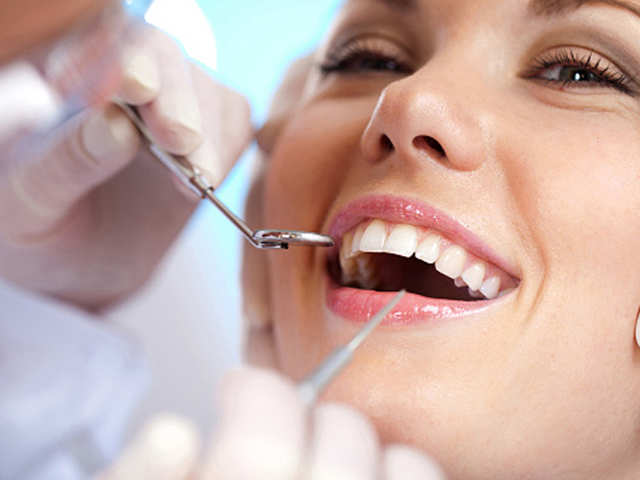
Dental Problems
Wisdom teeth are the third and final set of molars that erupt in the back corners of the upper and lower normal adult mouth. Unfortunately, most people experience problems from wisdom teeth; in most cases, this is because the teeth erupt too close to existing permanent teeth, causing crowding, improper bites, and other problems.
If wisdom teeth are causing a problem, this could mean that they are impacted. Impacted wisdom teeth can be extremely painful, as well as harmful to your oral health. Symptoms are easy to spot: pain, inflammation, and some kinds of infections.
Many people need to have their wisdom teeth extracted to avoid future serious problems. In general, the lack of the four wisdom teeth does not hamper one's ability to properly bite down, speak or eat.
Dental Problems
Plaque is a film of bacteria that forms on your teeth and gums after eating foods that produce acids. These foods may include carbohydrates (starches and sugars), such as candy and cookies, and starchy foods such as bread, crackers, and cereal.
Tooth decay, commonly known as cavities, occurs when plaque remains on your teeth for an extended period of time, allowing the bacteria to ‘eat away’ at the surfaces of your teeth and gums. Ironically, the areas surrounding restored portions of teeth (where fillings, or amalgams have been placed) are particularly vulnerable to decay and are a breeding ground for bacteria.
Plaque can lead to gum irritation, soreness, and redness. Sometimes, your gums may begin to bleed as a result of plaque. This gradual degeneration can often cause gums to pull away from teeth. This condition is called receding gums.
Long-term plaque can lead to serious problems. Sometimes, the bacteria can form pockets of disease around tooth structures, eventually destroying the bone beneath the tooth.
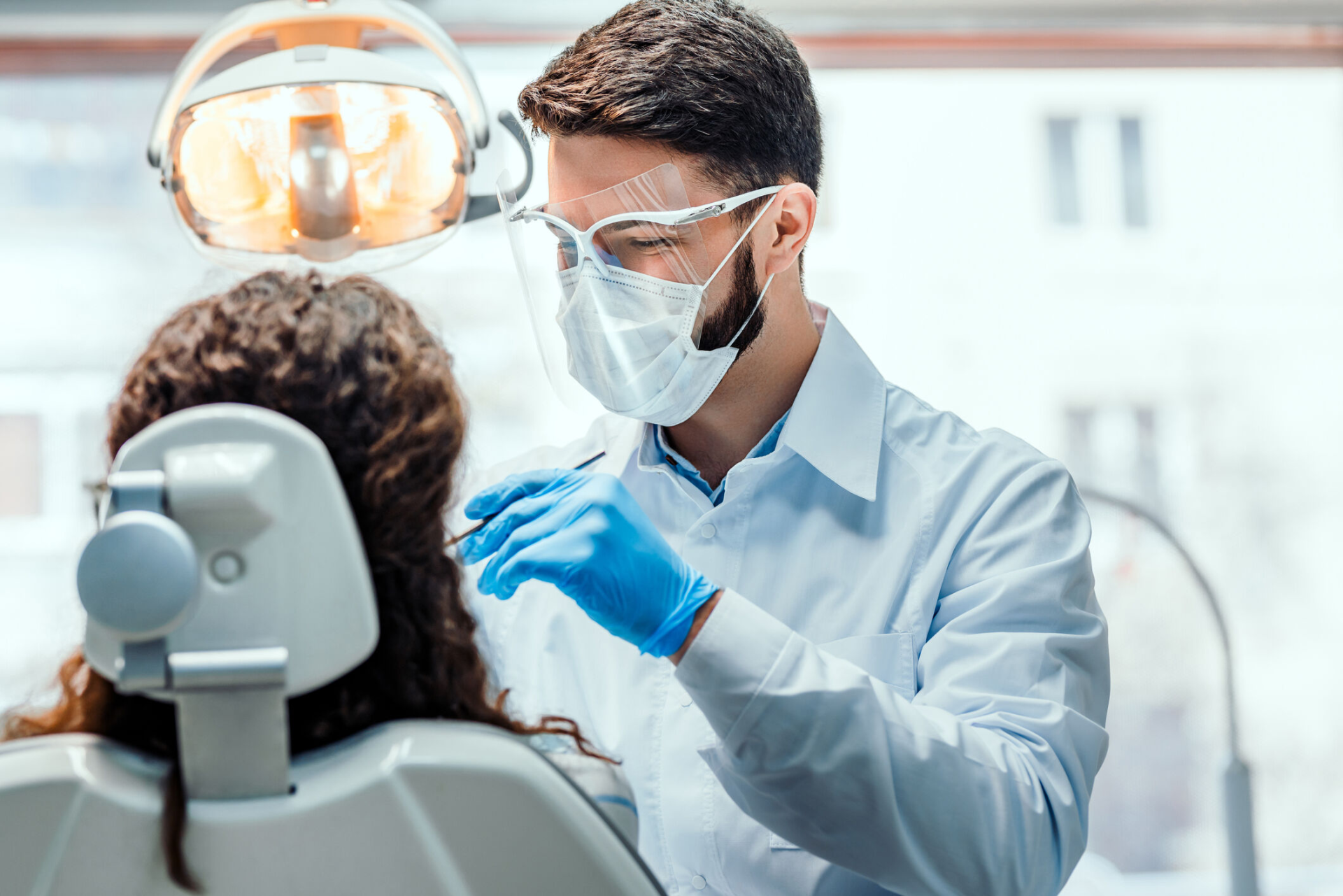
Dental Problems
Any kind of cut to your face and the delicate soft tissues inside your mouth should be addressed immediately in order to prevent further tissue damage and infection.
If a traumatic injury involves a broken facial bone such as the jaw, nose, chin or cheek, maxillofacial surgery may be required.
With jaw surgery, rubber bands, tiny wires, metal braces, screws or plates are often used to keep a fractured jaw in place following surgery. This allows the bone to heal and stay in proper alignment. Dental splints or dentures may also be required to supplement the healing process following jaw surgery.
Dental Problems
If you wince with pain after sipping a hot cup of coffee or chewing a piece of ice, chances are that you suffer from "dentin hypersensitivity," or more commonly, sensitive teeth.
Hot and cold temperature changes cause your teeth to expand and contract. Over time, your teeth can develop microscopic cracks that allow these sensations to seep through to the nerves. Exposed areas of the tooth can cause pain and even affect or change your eating, drinking and breathing habits.
At least 45 million adults in the United States suffer at some time from sensitive teeth.
Sensitive teeth result when the underlying layer of your teeth (the dentin) becomes exposed. This can happen on the chewing surface of the tooth as well as at the gum line. In some cases, sensitive teeth are the result of gum disease, years of unconsciously clenching or grinding your teeth, or improper or too vigorous brushing (if the bristles of your toothbrush are pointing in multiple directions, you're brushing too hard).
Abrasive toothpastes are sometimes the culprit of sensitive teeth. Ingredients found in some whitening toothpastes that lighten and/or remove certain stains from enamel, and sodium pyrophosphate, the key ingredient in tartar-control toothpastes, may increase tooth sensitivity.
In some cases, desensitizing toothpaste, sealants, desensitizing ionization and filling materials including fluoride, and decreasing the intake of acid-containing foods can alleviate some of the pain associated with sensitive teeth.
Sometimes, a sensitive tooth may be confused by a patient for a cavity or abscess that is not yet visible.
In any case, contact your dentist if you notice any change in your teeth's sensitivity to temperature.

Dental Problems
An estimated sixty-five percent of Americans have bad breath. Over forty-million Americans have "chronic halitosis," which is persistent bad breath. Ninety percent of all halitosis is of oral, not systemic, origin.
Americans spend more than $1 billion a year on over the counter halitosis products, many of which are ineffective because they only mask the problem.
What causes bad breath?
Bad breath is caused by a variety of factors. In most cases, it is caused by food remaining in the mouth - on the teeth, tongue, gums, and other structures, collecting bacteria. Dead and dying bacterial cells release a sulfur compound that gives your breath an unpleasant odor. Certain foods, such as garlic and onions, contribute to breath odor. Once the food is absorbed into the bloodstream, it is transferred to the lungs, where it is exhaled. Brushing, flossing and mouthwash only mask the odor. Dieters sometimes develop unpleasant breath from fasting.
Periodontal (gum) disease often causes persistent bad breath or a bad taste in the mouth, and persistent bad breath may mean a sign that you have gum disease.
Gum disease is caused by plaque - the sticky, often colorless, film of bacteria that constantly forms on teeth. Dry mouth or xerostomia may also cause bad breath due to decreased salivary flow. Saliva cleans your mouth and removes particles that may cause odor. Tobacco products cause bad breath, stain teeth, reduce your ability to taste foods and irritate your gum tissues. Bad breath may also be a sign that you have a serious health problem, such as a respiratory tract infection, chronic sinusitis, postnasal drip, chronic bronchitis, diabetes, gastrointestinal disturbance, liver or kidney ailment.
Dental Problems
Saliva is one of your body's natural defenses against plaque because it acts to rinse your mouth of cavity-causing bacteria and other harmful materials. Dry mouth (also called Xerostomia) is a fairly common condition that is caused by diminished saliva production. People with medical conditions, such as an eating disorder or diabetes, are often plagued by dry mouth. Eating foods such as garlic, tobacco use, and some kinds of medications, including treatments such as cancer therapy can diminish the body's production of saliva, leading to dry mouth. Other causes are related to aging (including rheumatoid arthritis), and compromised immune systems.
Some of the less alarming results of dry mouth include bad breath. But dry mouth can lead to more serious problems, including burning tongue syndrome, a painful condition caused by lack of moisture on the tongue.
If dry mouth isn't readily apparent, you may experience other conditions that dry mouth can cause, including an overly-sensitive tongue, chronic thirst or even difficulty in speaking.
If you don't have a medical condition that causes it, dry mouth can be minimized by sipping water regularly, chewing sugarless gum and avoiding smoking. Of course, there is no substitute for regular checkups and good oral hygiene.
Dental Problems
Fluorosis is a condition in which your body has been exposed to too much fluoride. In normal doses (typically found in a safe drinking water system and an ADA-approved toothpaste), fluoride is a healthy compound that promotes strong teeth, which has the ability to fight cavities and other problems.
But sometimes, fluorosis occurs when fluoride-containing toothpastes or rinses are swallowed, instead of expelled.
Fluorosis causes a number of aesthetic problems, including abnormally darkened or stained teeth. While such problems are generally harmless to your health, they can create concerns with your appearance.

Dental Problems
People living with diabetes are vulnerable to a host of systemic problems in their entire body. Unfortunately, the mouth and teeth are not immune from such problems, and many diabetics with oral problems go undiagnosed until conditions become advanced.
Infections and other problems such as receding gums and gum disease, or periodontal disease, are common afflictions among diabetics for many reasons; for instance, diabetics often are plagued by diminished saliva production, which can hamper the proper cleansing of cavity-causing debris and bacteria from the mouth. In addition, blood sugar levels that are out of balance could lead to problems that promote cavities and gum disease.
As with any condition, good oral hygiene, including regular brushing, flossing and rinsing, as well as the proper diabetic diet, will go a long way in preventing needless problems.
Dental Problems
People who grind their teeth can sometimes develop a serious problem with their jaw, which left untreated, can adversely affect the teeth, gums and bone structures of the mouth. One of the most common jaw disorders is related to a problem with the temporomandibular joint, the joint that connects your lower jaw to your skull, and allows your upper and lower jaw to open and close and facilitates chewing and speaking.
People with temporomandibular joint disorders (TMD) often have a clicking or popping sound when opening and closing their mouths. Such disorders are often accompanied by frequent headaches, neck aches, and in some cases, tooth sensitivity.
Some treatments for TMD include muscle relaxants, aspirin, biofeedback, or wearing a small plastic appliance in the mouth during sleep.
Minor cases of TMD involve discomfort or pain in the jaw muscles. More serious conditions involve improperly aligned joints or dislocated jaws. The most extreme form of TMD involves an arthritic condition of the jaw joint.
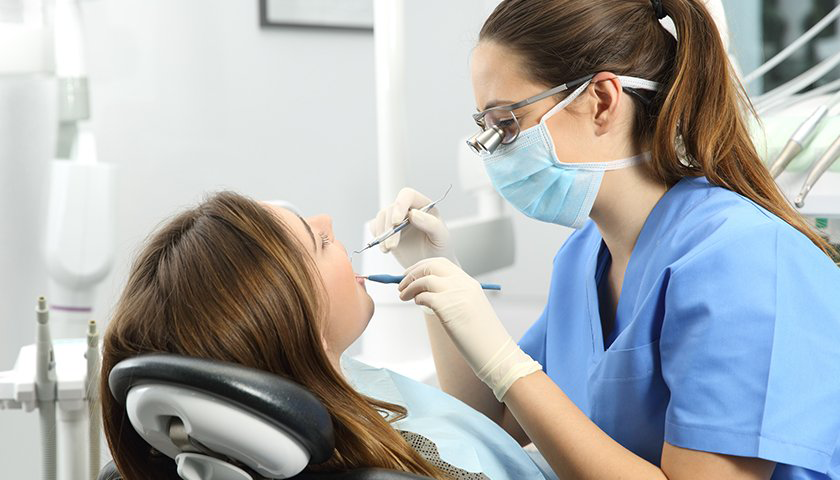
Dental Problems
The best defense against cavities is good oral hygiene, including brushing with a fluoride toothpaste, flossing and rinsing. Your body's own saliva is also an excellent cavity fighter, because it contains special chemicals that rinse away many harmful materials. Chewing a good sugarless gum will stimulate saliva production between brushing.
Special sealants and varnishes can also be applied to stave off cavities from forming.
If you have any of the following symptoms, you may have a cavity:
Unusual sensitivity to hot and cold water or foods.
A localized pain in your tooth or near the gum line.
Teeth that change color.
Dental Problems
People sometimes confuse canker sores and cold sores, but they are completely unrelated. Both can be painful, but knowing the differences can help you keep them in check.
A canker sore is typically one that occurs on the delicate tissues inside your mouth. It is usually light-colored at its base and can have a red exterior border.
A cold sore or fever blister, on the other hand, usually occurs on the outside of the mouth, usually on or near the nose or lips. A cold sore is contagious because it is caused by the herpes simplex virus, and it is usually painful and filled with fluid.
In most cases, patience is the best medicine for treating canker sores. A healthy diet and good oral hygiene are usually the best remedy, but some special rinses and anesthetics can help. Cold sores can be treated effectively with some over-the-counter topical creams; sometimes, an antiviral medication will be prescribed by your doctor.
Dental Problems
People with eating disorders can suffer from oral health problems as well. This is because many of the behaviors associated with anorexia nervosa and bulimia nervosa—such as binge eating, self-induced vomiting, and use of diuretics or laxatives—cause changes in the mouth.
For example, repeated episodes of vomiting, which is common in people with bulimia, release harmful stomach acids that pass through the mouth and can erode tooth enamel, causing cavities, discoloration and tooth loss. Other problems, such as poorly fitting fillings and braces, are another byproduct of such eating disorders.
Brushing after episodic vomiting is actually more harmful than one would think. The best practice is to rinse thoroughly with a neutral solution such as baking soda and water.
Dental Problems
An abscessed tooth is a pocket of pus, usually caused by some kind of infection and the spread of bacteria from the root of the tooth to the tissue just below or near the tooth.
In general, a tooth that has become abscessed is one whose underlying pulp (the tooth's soft core) has become infected or swollen. The pulp contains nerves, blood vessels and connective tissue, and lies within the tooth. It extends from the crown of the tooth, to the tip of the root, in the bone of the jaws.
An abscessed tooth can be an extremely painful condition.
In some cases, antibiotics are administered in an attempt to kill an infection. If antibiotics are ineffective and an abscess is shown to be damaging the pulp or lower bony structures, a root canal procedure may be needed to remove the dead pulp and restore the tooth to a healthy state.
